The Essential Guide to Retail Store Layouts - Types of Store Layouts
8th Oct 2024
When designing a retail store, the layout you choose sets the tone for the shopping experience and directly impacts customer flow, engagement, and overall satisfaction. From guiding customers on a specific journey to encouraging them to explore freely, each layout style offers unique advantages tailored to different types of retail spaces. In this post, we’ll explore eight popular retail store layouts, breaking down their key characteristics and how they can enhance your store's design strategy.
1. Forced Path Layout
It uses a predetermined path to guide the customer through the store. IKEA stores are a good example of this layout. It is quite useful in managing customer traffic flow and enhancing sales.
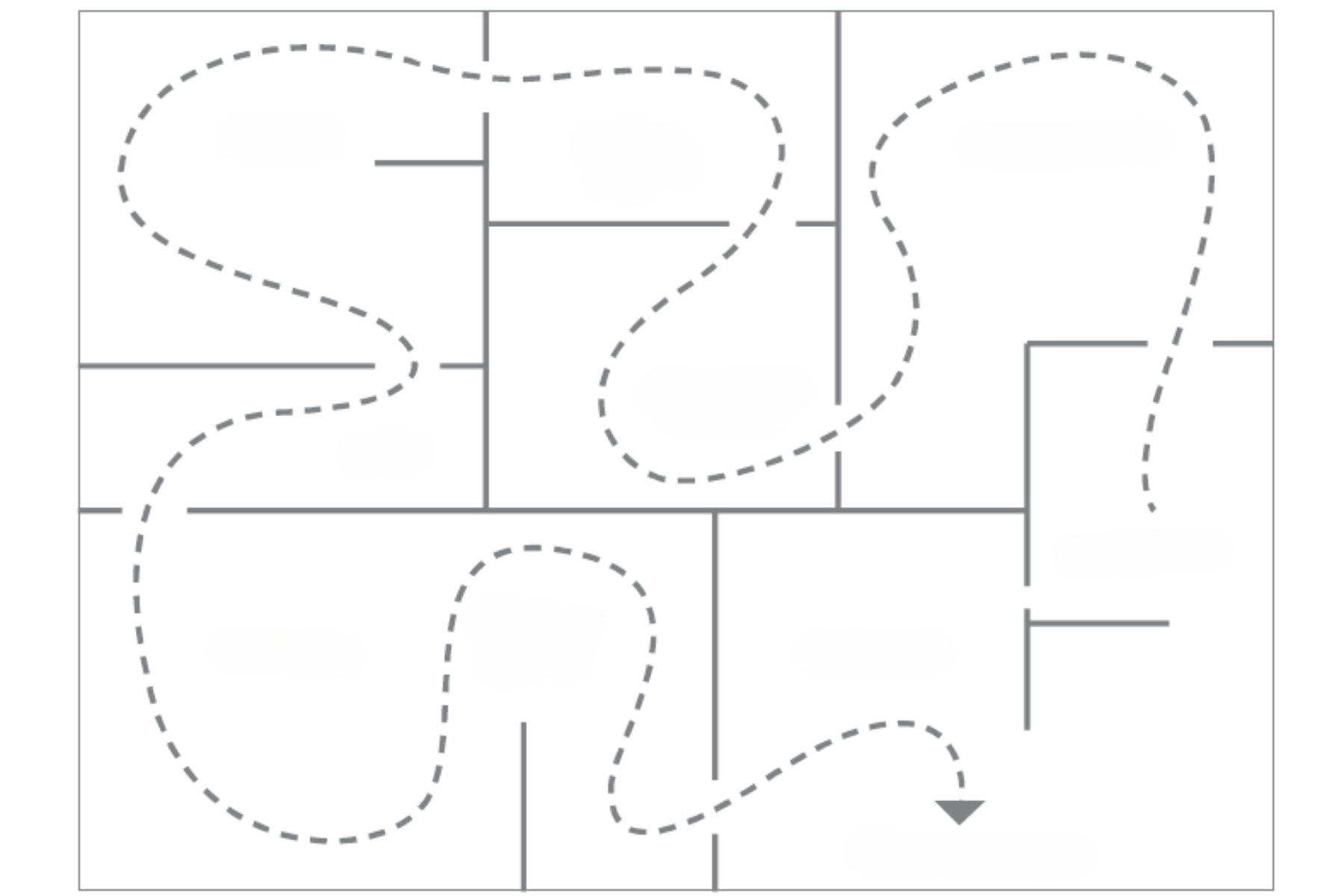
2. Grid Store Layout
A common layout at drug stores. this one uses standard fixtures and displays around efficient spacing for customer comfort. However, it lacks inspiration and can seem creatively flat.
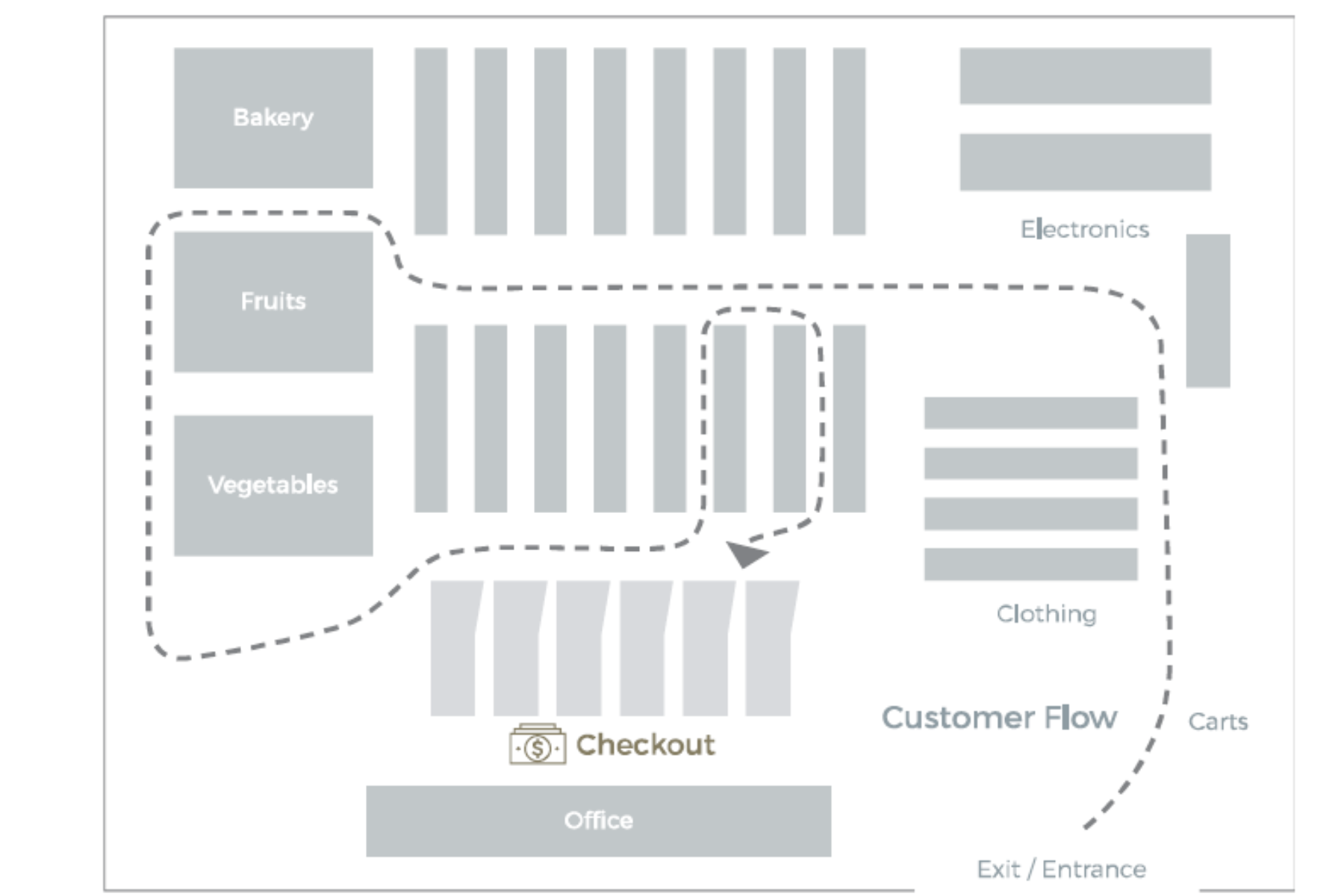
3. Loop Store Layout
It is also called the 'racetrack layout'. The creation of a path to lead customers from entrance to check out accomplishes a loop effect. Designers use lighting or different colours to guide the customers on this track.
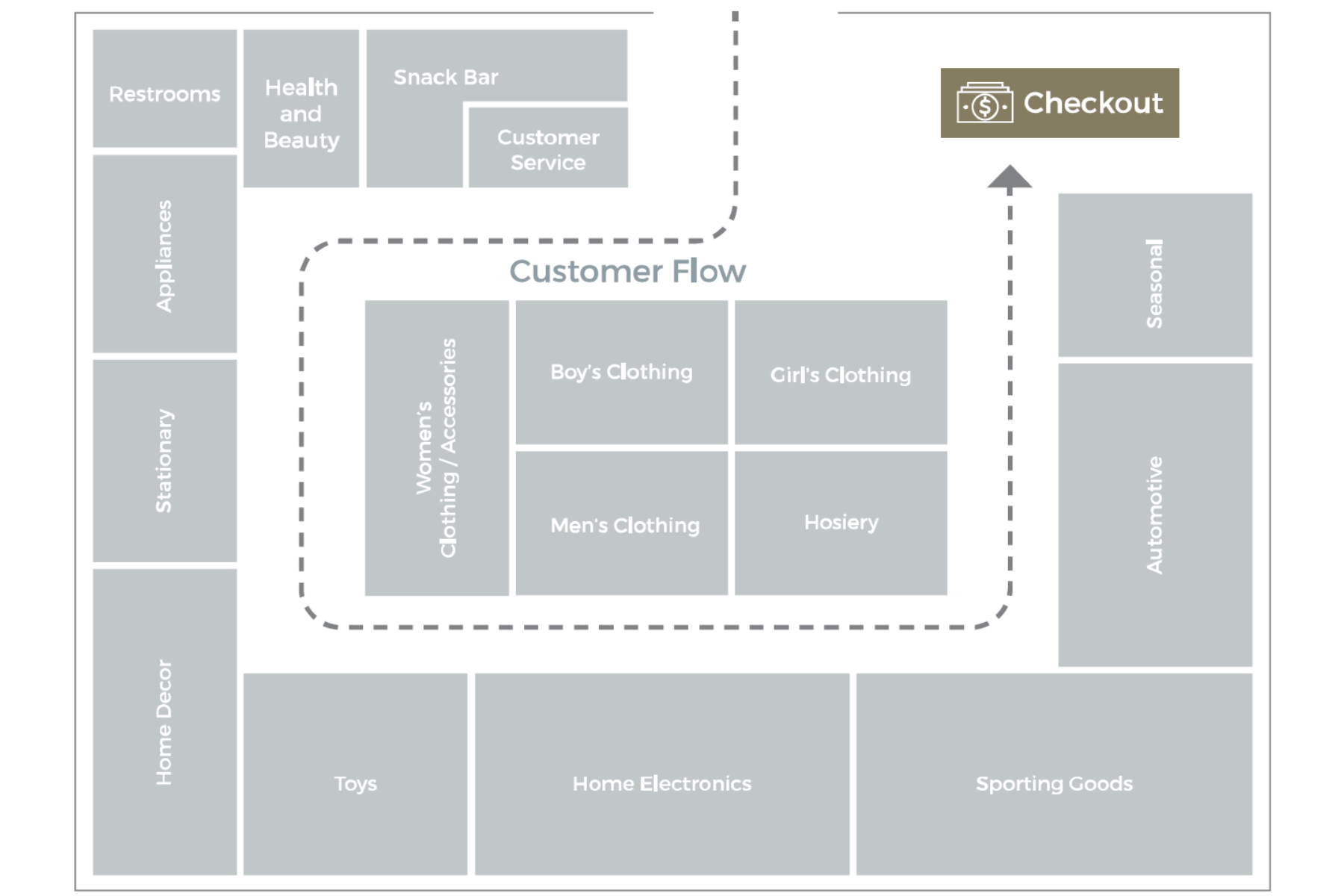
4. Straight Store Layout
This is simple and efficient. It allows creating personal spaces for shoppers as well as lead them towards featured merchandise at the back of the store.
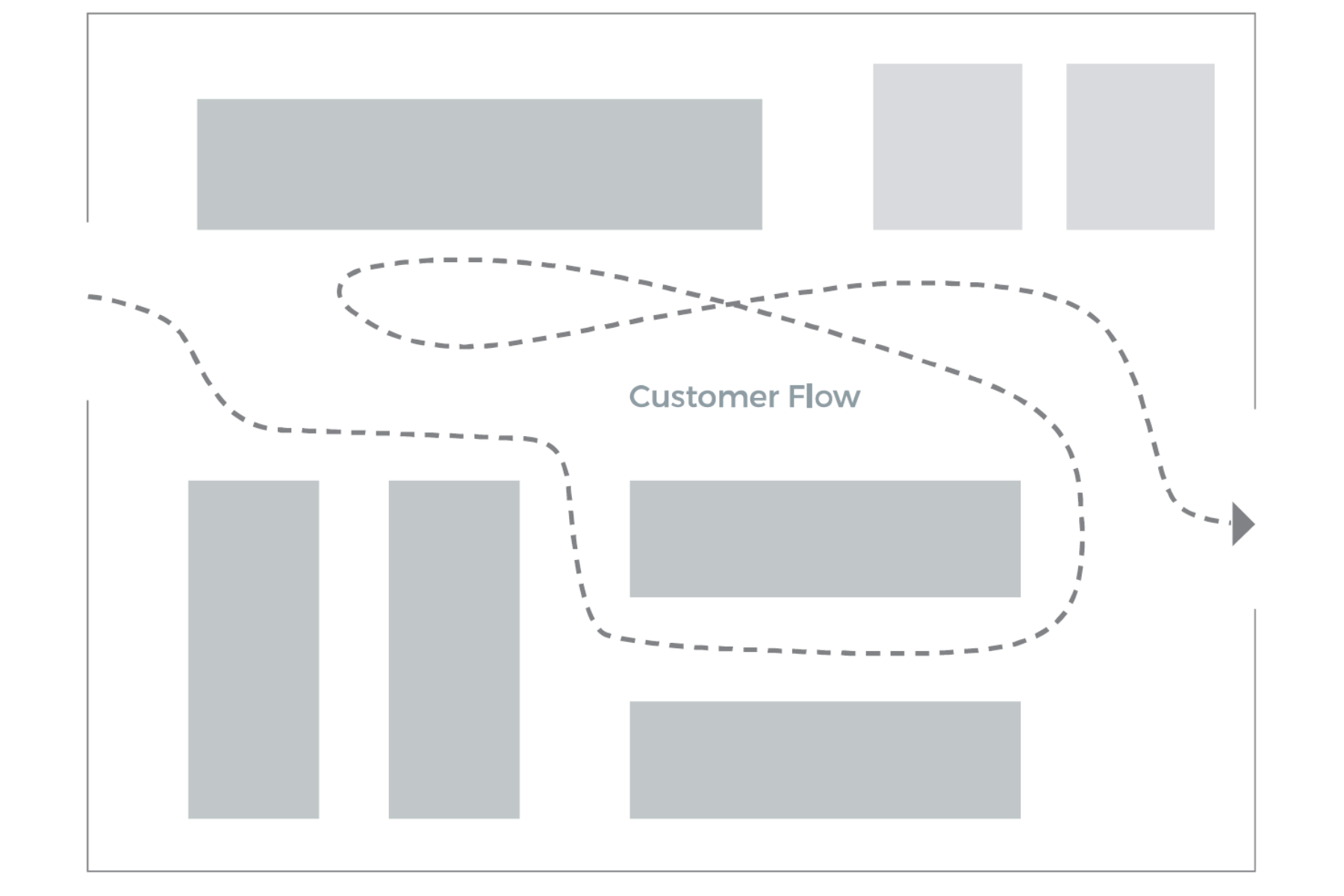
5. Diagonal Store Layout
Utilising aisles placed at angles, this layout offers more exposure to merchandise and ease of navigation. Small stores can greatly benefit from this design.
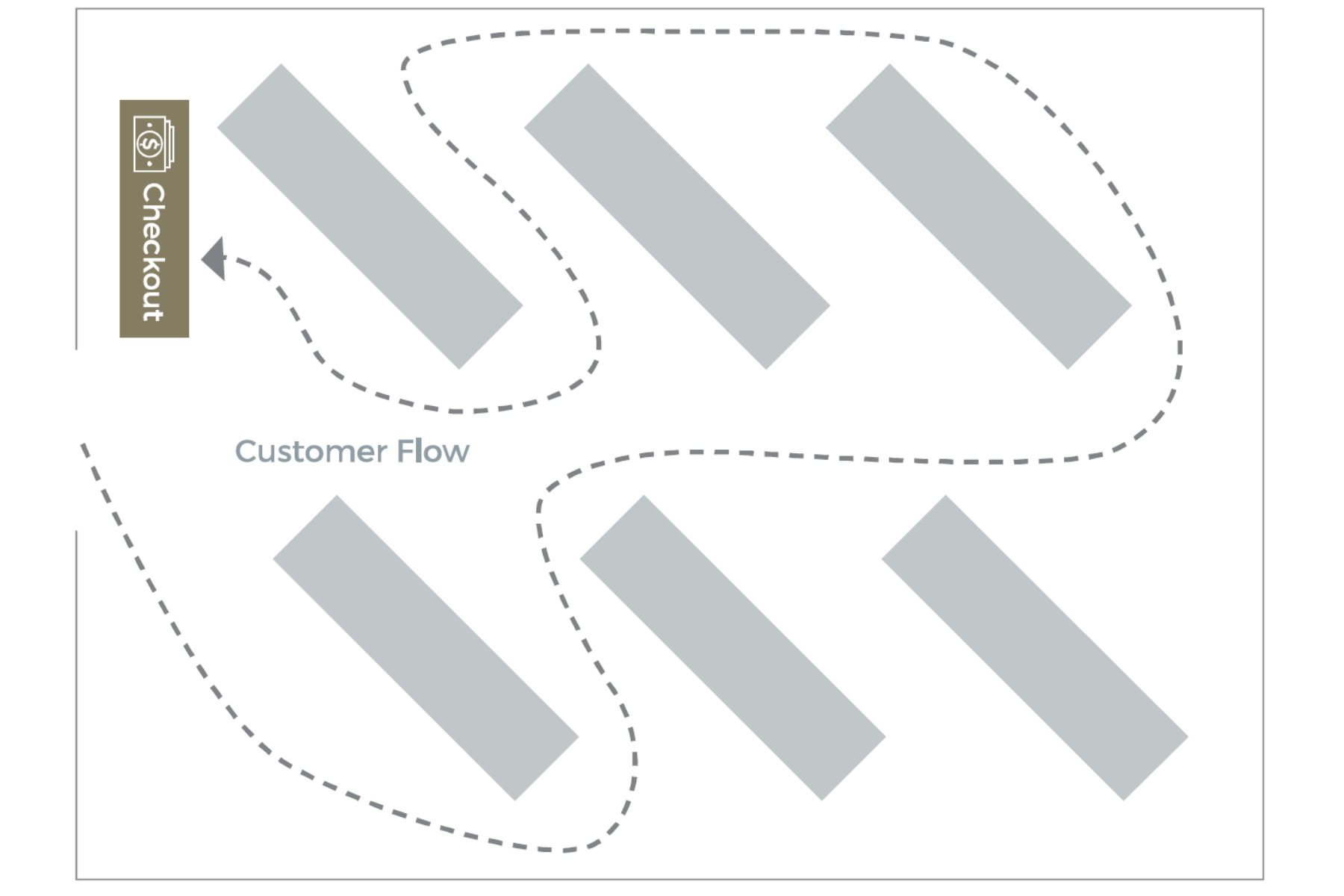
6. Angular Store Layout
The name of this layout is misleading as it relies on curved walls and corners. Free standing products on curved fixtures tend to get noticed more often.

7. Geometric Store Layout
This layout is popular amongst millennials. With geometric placement of fixtures and displays, the layout looks artistic and offers a style statement.

8. Mixed Store Layout
Best of both worlds or even more. Mixed layouts use design elements of multiple layouts to customise a store design that would best suit your brand concept.

Ultimately, selecting the right store layout is about aligning with your brand’s vision and creating an environment where customers feel comfortable and inspired to shop. Whether you’re drawn to the classic structure of a grid layout or the modern flair of a geometric design, there’s a layout that can bring your store’s unique identity to life. Take the time to experiment and adapt—after all, a well-thought-out layout is more than just an arrangement; it’s a vital tool for crafting a memorable and engaging retail experience.
Need help with your store's floor plan? Our in-house design team are here to help!
Click here to get your FREE 3D Design of your store.


